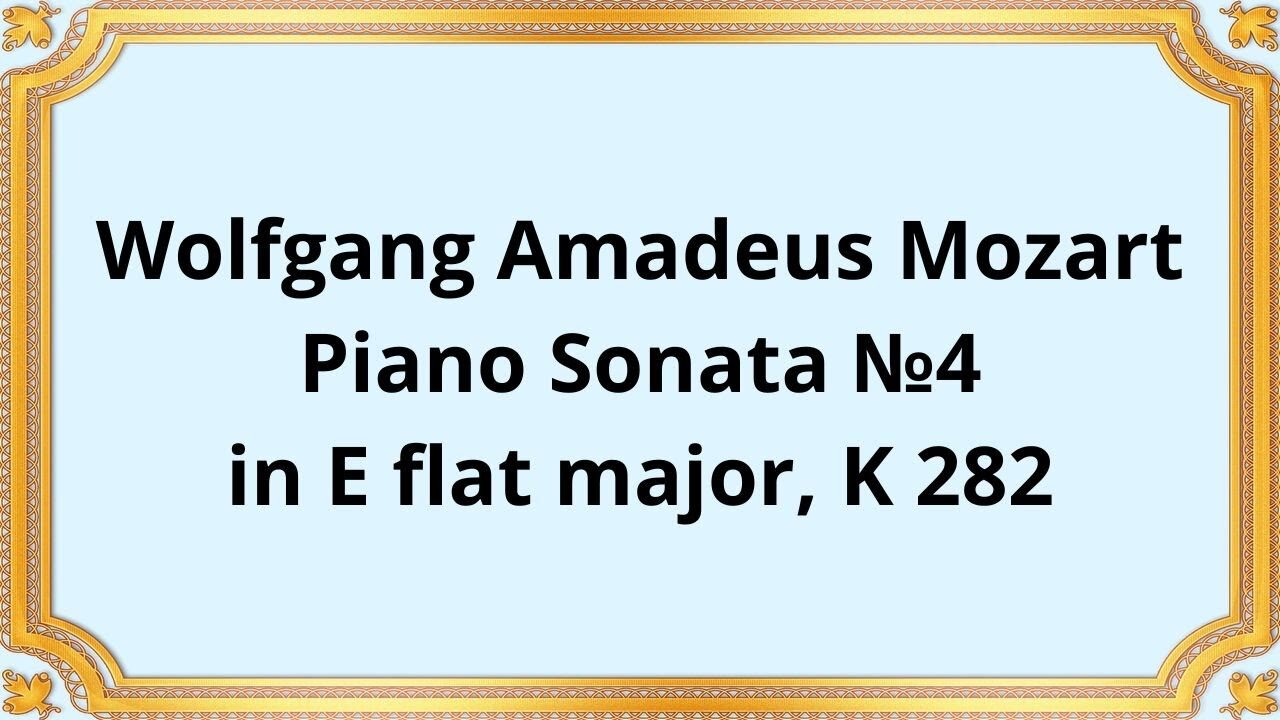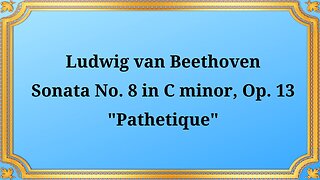Premium Only Content

Wolfgang Amadeus Mozart Piano Sonata №4 in E flat major, K 282
#Mozart#Chamber_music#Classical_music#Piano_Sonata#Musical_composition
Publication date 1938
I. Adagio
II. Menuetto I & II
III. Allegro
Kathleen Long (piano)
Wolfgang Amadeus Mozart's Piano Sonata No. 4 in E flat major, K 282, is a classic example of Mozart's genius as a composer. This piano sonata is one of Mozart's early works, composed in 1774, when he was just 18 years old.
Mozart composed the Piano Sonata No. 4 in E flat major, K 282, while he was on a tour of Italy in 1774. This was a period of intense creativity for the young composer, and he was experimenting with different forms and structures. The sonata was first published in 1784 in Vienna, along with several other piano sonatas.
The Piano Sonata No. 4 in E flat major, K 282, consists of three movements:
Adagio - This slow, melancholic opening movement is in the key of E flat major. The melody is simple and elegant, with a repeating motif that sets the tone for the entire movement.
Menuetto I & II - The second movement is a minuet and trio in the key of C minor. The first part of the minuet is light and playful, while the second part is more serious and intense. The trio is a stark contrast to the minuet, with a slow, mournful melody that creates a sense of longing.
Allegro - The final movement is a fast and lively allegro in the key of E flat major. The melody is playful and energetic, with intricate runs and trills that showcase Mozart's virtuosic piano writing.
The Piano Sonata No. 4 in E flat major, K 282, is significant in that it showcases Mozart's early development as a composer. The sonata is more straightforward and less complex than some of his later works, but it still contains the hallmarks of his style, such as elegant melodies, intricate harmonies, and virtuosic piano writing.
The sonata is also significant in that it is an excellent example of Mozart's use of form and structure. Each movement has a distinct character and mood, but they are also connected by common themes and motifs, creating a sense of musical unity.
Conclusion
Wolfgang Amadeus Mozart's Piano Sonata No. 4 in E flat major, K 282, is a beautiful and significant work that showcases Mozart's early development as a composer. The sonata's elegant melodies, intricate harmonies, and virtuosic piano writing are hallmarks of Mozart's style, and the sonata's use of form and structure is a testament to his genius as a composer. The sonata is a must-listen for anyone interested in classical music and is sure to delight and inspire.
-
 18:26
18:26
Classical music_Music Inspiration
1 month agoLudwig van Beethoven Piano Sonata No. 8 in C minor, Op. 13 "Pathétique"
601 -

The Mel K Show
5 hours agoMel K & Dr. Kirk Moore | A Doctor’s Oath: Doing What is Right No Matter the Cost | 7-26-25
7.05K -
 LIVE
LIVE
Mally_Mouse
4 hours agoSpicy Saturday!! - 10k CELEBRATION! - Let's Play: Labyrinthine
686 watching -
 36:44
36:44
NordicVentures
5 days ago $0.24 earnedWINTER Bushcraft 2 Nights: Building ALONE a Survival Shelter
1.61K -
 LIVE
LIVE
Amish Zaku
7 hours agoRumble Spartans July Event- Classic Halo Multiplayer
68 watching -
 LIVE
LIVE
Phyxicx
2 hours agoRumble Halo Night w/ Rumble Spartans! - 7/26/2025
44 watching -
 7:12
7:12
nospeedlimitgermany
2 days ago $0.14 earnedAudi TT 1.8 T Roadster | 180 PS | Top Speed Drive German Autobahn No Speed Limit POV
1.98K1 -
 LIVE
LIVE
Dragoon_B
1 hour agoDragoon - Counter Strike - Premier Grind
34 watching -
 LIVE
LIVE
CODZombieGod115
3 hours ago🔴LIVE - Janus Towers DLC 4 Hype | Black Ops 6 Zombies
46 watching -
 53:25
53:25
SouthernbelleReacts
4 days ago $0.11 earnedMy Reaction to 12 Monkeys (1995) | Time Travel, Madness & Bruce Willis Brilliance
2.34K1